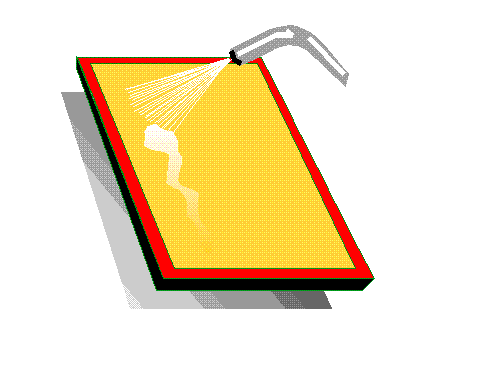Introduction to the art of screenprinting:
|
 |
Introduction to the art of screenprinting:
|
 |
| INTRODUCTION
TO SCREENPRINTING Screenprinting was first invented in 1000BC in China. The original screens were made out of silk but in recent years silk has been superceded by artificial materials for the mesh. The principal has remained the same - where the mesh has been blocked out it does not allow the ink through and where the mesh has not been blocked out the ink flows through freely. Once the screen has been prepared, it is placed on a printing frame on a table. The paper or other material is placed under the screen and the ink is applied with the help of a squeegee made of rubber, which is dragged with a certain amount of pressure across the screen. For additional colours new screens have to be prepared and printed in the above manner. THE ADVANTAGES OF SCREENPRINTING Screenprinting is a flexible medium which can print on to various surfaces which would not be possible by offset litho. For example, screenprinting can be applied not just to paper and card, but to PVC and many other plastics, glass, metal, wood, fabric, etc. and onto numerous different shapes and sizes. Because of this, screenprint is the favoured medium for point of sale and enjoys a wide variety of promotional uses. Whereas digital printing and computer-generated large format printing have been making inroads into the traditional screenprint market, none of these have been able to match the vibrancy of colour available through screenprint. |
 |
Stage 1: Preparing
the screen
The first state in the process of screenprinting is to prepare the screen. This is done by carefully washing the screen removing all traces of ink and stencil materials from the last print job. Once the screen has been thoroughly cleaned, it is coated with a light-sensitive emulsion to make the stencil. |